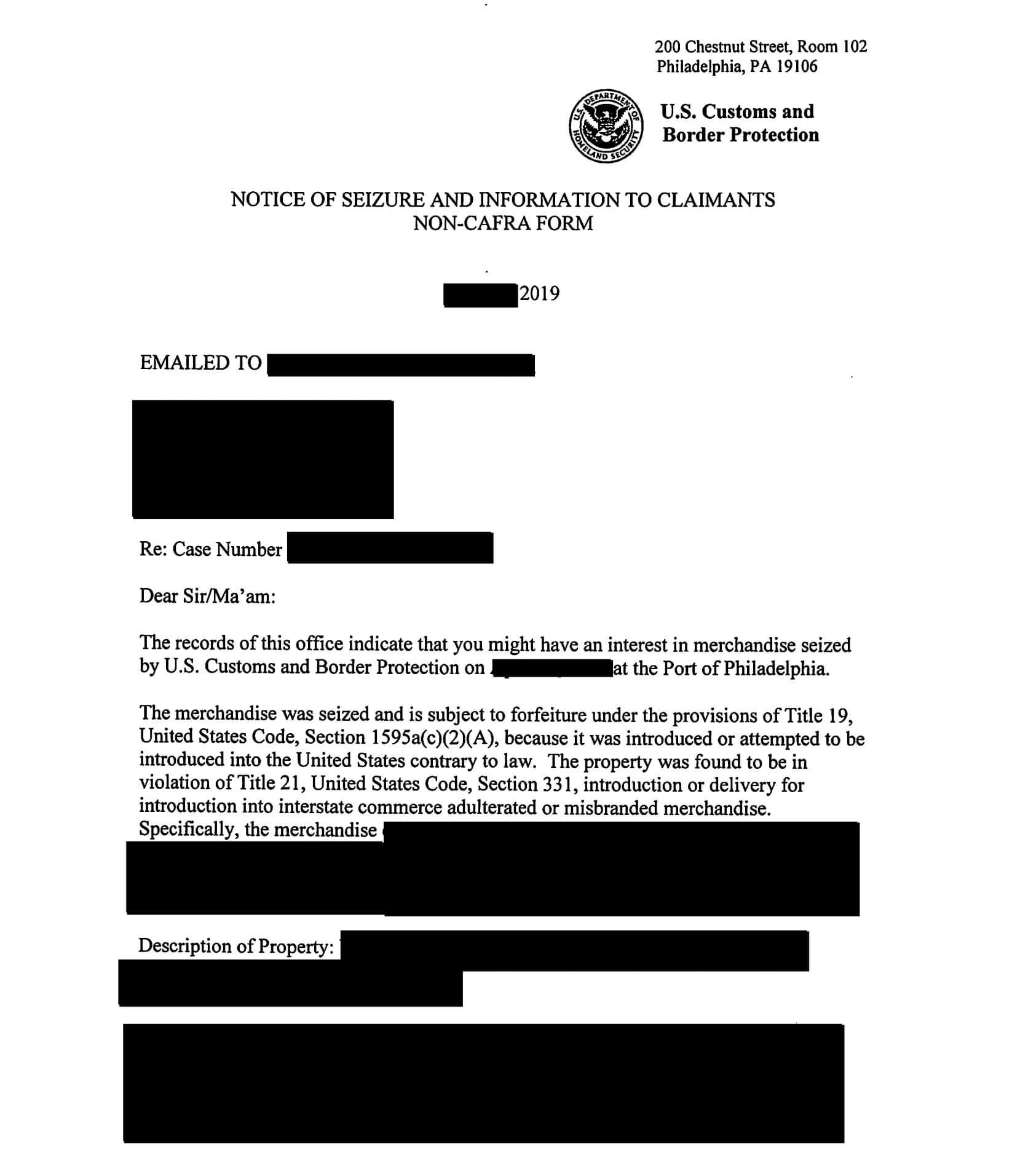New de minimis shipping rule changes effective May 2, 2025, eliminate the $800 duty-free exemption for imports from China and Hong Kong. This means businesses must now pay duties on these low-value imports. This article explains these changes, their impact on your business, and how to adapt.
Key Takeaways
- The de minimis rule, previously allowing duty-free imports under $800, will no longer apply to goods from China and Hong Kong, leading to increased tariffs.
- E-commerce businesses must adapt their pricing strategies and logistics to accommodate new duty requirements and consider establishing U.S. fulfillment centers to mitigate costs.
- Compliance with new regulations requires accurate documentation and HTS code classification to prevent penalties, highlighting the need for robust compliance systems.
Overview of De Minimis Shipping Rules

The de minimis trade exemption has long been a cornerstone of international commerce, allowing shipments worth less than $800 to enter the U.S. duty-free. This rule has evolved over time to reflect changing economic conditions and trade practices, aiming to promote consumer spending by minimizing the costs associated with duties on low-value imports, including the duty exemption and the de minimis duty exemption.
De minimis provisions play a crucial role in facilitating trade by allowing low-value shipments to enter a country duty-free, reducing the administrative burden on customs agencies. Raising the threshold enhances compliance efficiency, allowing customs to concentrate on higher-value imports and streamline the overall process of de minimis shipments.
However, the de minimis provision is not without its critics. Some argue that it provides an unfair advantage to Chinese e-commerce companies and raises concerns about counterfeit and unsafe goods due to minimal documentation and inspection. Despite these criticisms, the rule has played a pivotal role in encouraging international commerce and consumer spending.
Recent Changes to De Minimis Exemptions

In a significant policy shift, President Trump signed an executive order on April 2, 2025, terminating the duty-free de minimis status for low-value imports from China and Hong Kong on that date, effective May 2, 2025. This move marks a departure from the long-standing practice of allowing imports valued at or under $800 to qualify for the de minimis exemption.
Under the new rules, goods transported via international postal networks that meet the criteria will face duty rates of either 30% of their value or a flat fee, which will increase from $25 to $50 after June 1, 2025. This change is part of a broader initiative to protect American businesses from unfair trade practices facilitated by the de minimis exemption. The elimination of de minimis for imports from China and Hong Kong adds complexity to the tariff landscape, requiring businesses to adapt their compliance strategies regarding postal item regulations.
These changes are anticipated to significantly impact fiscal year revenue, with higher tariffs being collected from previously duty-free imports as businesses collect taxes and tariff revenue. Such actions adapt to this new reality, understanding and complying with updated regulations becomes crucial.
New Duty Requirements for Low-Value Imports
The new duty requirements for low-value imports mark a substantial shift from the previous de minimis exemption. Goods valued at or under $800 that were previously eligible for this exemption will now incur a duty of either 30% of their value or a flat fee of $25 per item, increasing to $50 on June 1. This change means that businesses importing low-value products will need to account for these additional costs in their pricing and logistics strategies.
The new additional duties will likely have significant implications for both businesses and consumers. Businesses may need to adjust price strategies to maintain profit margins and pay, which could be imposed, raising a concern potentially leading to higher prices for imported goods for consumers.
Accurate classification of goods and calculation of applicable duties will be essential to avoid penalties and delays under the new office regulations. Adapting to these new rules highlights the need for businesses to stay informed and proactive in managing international trade operations.
Implications for E-commerce Businesses

The recent changes to de minimis rules are poised to significantly disrupt e-commerce operations, particularly for those importing goods from China. The prohibition of de minimis entries for certain imports could lead to increased operational costs and altered shipping logistics for e-commerce companies.
The immediate impact will be the increased costs associated with customs duties. E-commerce businesses that relied on the de minimis exemption will need to factor these additional costs into their pricing strategies, potentially resulting in higher prices for consumers and reduced demand for imported merchandise.
Many e-commerce businesses are considering establishing local fulfillment centers to navigate these changes. Holding inventory in the U.S. allows companies to avoid customs duties and expedite shipping times, enhancing the customer experience. This strategy requires significant investment and logistical planning, emphasizing the need for businesses to adapt quickly and efficiently.
Strategies for Adapting to New Regulations
E-commerce businesses will need to implement several strategic changes to adapt to the new de minimis regulations. Adjusting pricing strategies to account for increased tariffs and VAT is vital for maintaining profit margins.
Implementing robust compliance systems and adequate systems for tracking tariff codes is another essential strategy. Accurate classification of goods and efficient customs documentation handling will help businesses avoid penalties and delays. Leveraging automation in customs duty compliance can streamline these processes, aiding businesses in managing the complexities of the new tariff regulations.
Diversifying supply chains is an effective approach. Sourcing products from multiple regions helps businesses mitigate risks associated with the de minimis rule changes, reducing reliance on any single country and providing more flexibility in managing international trade operations.
Navigating the Import Process Post-De Minimis Rule Change

Navigating the import process after the de minimis rule change requires understanding the new requirements. Starting May 2, 2025, shipments from China and Hong Kong starting valued at $800 or less will need a formal entry or informal entry process instead of Entry Type 86, necessitating more detailed documentation and compliance efforts.
Using the accurate 10-digit Harmonized Tariff Schedule (HTS) code under Entry Type 11 is critical. Incorrect codes can result in misapplied duties and delays, making precise reporting essential. Carriers must report shipment details to U.S. Customs and Border Protection (CBP) and maintain a bond to guarantee duty payments.
Different countries have varying de minimis thresholds, with the U.S. set at $800 and Canada at $20. Businesses engaged in international trade must understand these differences to manage their import processes and compliance requirements effectively.
Compliance and Documentation Requirements
Compliance with the new regulations requires meticulous documentation and classification. Accurate HTS code classification is crucial for determining tariffs and ensuring proper documentation for customs clearance. The first six digits of the HTS code align with the Harmonized System (HS) code, providing a standardized classification method for imported and exported goods.
The Harmonized System (HS) plays a vital role in compliance and tariff assessments, allowing for consistent product classification internationally. This standardization is essential for businesses to navigate the complexities of international trade and ensure they comply with the new regulations.
In response to tariff changes, companies like Shein are actively engaging with U.S. Customs and Border Protection officials, showing a proactive approach to compliance. This engagement underscores the importance of staying informed and working closely with regulatory bodies to ensure smooth operations and act accordingly.
Impact on U.S. Customs and Border Protection Operations
Changes to the de minimis rule significantly impact U.S. Customs and Border Protection (CBP) operations. Section 321 aimed to reduce administrative burdens for low-value shipments, as regulation costs outweighed the benefits. However, the volume of low-value shipments qualifying for the exemption has surged by over 600% in the last decade, complicating CBP’s enforcement.
The new regulations will require certain low-value shipments to provide detailed classification information, assisting CBP in monitoring and enforcing compliance. This focus on detailed information will help address deceptive shipping practices by Chinese entities that exploit the de minimis rule to hide illegal substances, particularly synthetic opioids.
The regulations aim to enhance trade act law enforcement and protect consumer safety regarding low-value imports. Strictly regulating the de minimis threshold safeguards American businesses and ensures a level playing field in international trade laws.
Industry Reactions and Business Adjustments
The industry has responded swiftly to the changes in de minimis rules. Temu has begun steering shoppers to items in U.S. warehouses for faster delivery, while Shein has opened distribution centers in Illinois and California and a supply chain hub in Seattle. These adjustments aim to mitigate the impact of the new regulations on their operations.
Temu is enhancing logistics by partnering with third-party logistics firms in the U.S. to establish local warehousing, improving delivery times for consumers. Holding inventory in the U.S. helps Temu mitigate shipping and customs process disruptions, providing greater operational resilience.
Shein is diversifying its supply chains to include manufacturing in countries like Brazil and Turkey, as well as other countries, reducing reliance on Chinese production. These strategies highlight the importance of diversifying suppliers and considering regions like Vietnam and India for manufacturing to counter tightened de minimis policies.
Summary
The recent changes to de minimis shipping rules mark a significant shift in international trade practices, especially for e-commerce businesses. From understanding the new duty requirements to adapting business strategies, it’s clear that staying informed and proactive is crucial. As businesses navigate this evolving landscape, the importance of compliance, accurate documentation, and strategic adjustments cannot be overstated. Embrace these changes as opportunities to innovate and thrive in the global marketplace.
Frequently Asked Questions
What executive order did President Trump sign regarding the de minimis trade loophole?
President Trump signed an executive order closing the de minimis trade loophole, which became effective on May 2. This action reflects a commitment to enhance trade enforcement regulations.
What was the purpose of the de minimis trade exemption?
The purpose of the de minimis trade exemption is to permit shipments valued at less than $800 to enter the U.S. without incurring any duties. This facilitates small-scale trade and reduces the burden of customs costs for lower-value goods.
What duty will goods that qualify under the de minimis exemption be subject to after the executive order?
Goods qualifying under the de minimis exemption will be subject to a duty of 30% of their value or $25 per item, which will increase to $50 per item starting June 1.
How many de minimis shipments did U.S. Customs and Border Protection process in 2024?
U.S. Customs and Border Protection processed over 1.3 billion de minimis shipments in 2024. This significant number underscores the volume of low-value transactions facilitated by the agency.
What actions have Temu and Shein taken in response to the scrutiny of the de minimis loophole?
In response to scrutiny of the de minimis loophole, Temu is directing shoppers to faster delivery options from U.S. warehouses, while Shein has established distribution centers in Illinois and California and a supply chain hub in Seattle.




